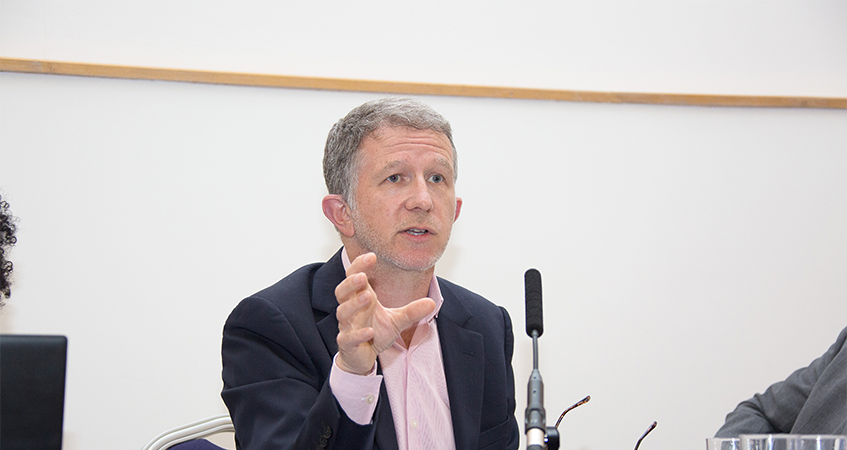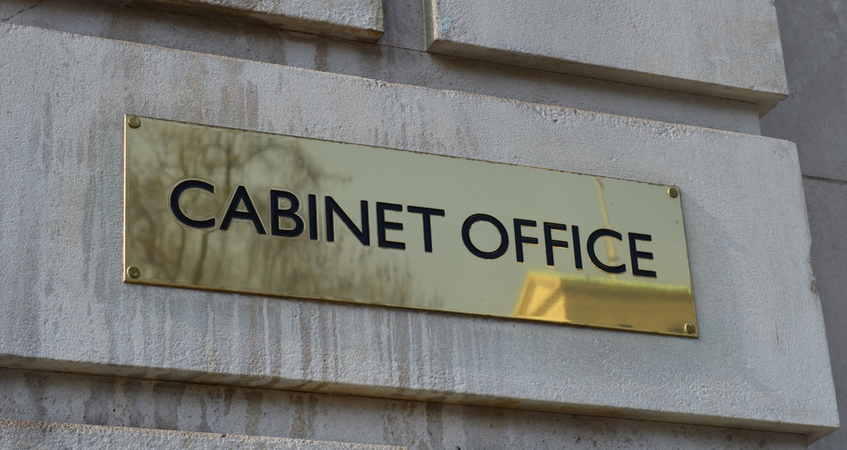Breaking Point
With prices rising and staff shortages spreading across public services, cracks are already appearing in the government’s public sector pay policy, writes Ken Mulkearn.

Has the current public sector pay policy – a cap of 1% on basic pay awards – reached the end of the road? It’s certainly under severe pressure, with growing evidence of recruitment, retention and morale problems across the public sector.
Manifesto commitments by the opposition parties to lift the pay cap were one sign of this. But employers have spoken out too – particularly in the NHS, where the impact on recruitment and retention has been especially acute. And a number of the Pay Review Bodies, which are constrained by their remits to recommend increases in line with the policy, have signalled their concerns that the approach is unsustainable.
By contrast, private sector pay awards have been running at a median of 2% for a while – double the level of public sector settlements. And the latest data analysed by Income Data Research, for the three months to the end of April, shows that the median settlement in the private sector has increased to 2.4%. The main reason for this is a greater number of awards at 3% or above, with most connected to the recent increase in the National Minimum Wage.
Pressure from rising inflation
This comes at a time when inflation is also rising. The Retail Price Index stood at 3.5% in the year to April, up sharply from 3.1% in the year to March. This was partly a result of air fares rising this year, in contrast to a fall last year – with Easter falling in April, the airlines took advantage of the school holidays to raise ticket prices.
But other upward pressures on inflation came from clothing, footwear and electricity prices.
These have risen because of the impact of sterling’s earlier weakness on import prices. The ongoing influence of currency fluctuations is one reason why economists predict that inflation is likely to keep rising, and could reach 4% on the RPI measure by the autumn.
Higher inflation is adding to the existing strain on public pay policy, as demonstrated by special deals for groups that have been most affected by recruitment, retention and morale issues. NHS paramedics have been re-banded nationally from band 5 (currently worth between £21,909 and £28,462) to band 6 (£26,302 to £35,225).
According to the Department for Health, the move “is in recognition of the increasing responsibilities of being a modern paramedic” and partly reflects the burden being placed on paramedics when hospitals are more hard-pressed than before.
Meanwhile, the Government has announced that pay for new prison officers and some staff in jails in London and the South East will increase by up to £5,000. The move is also aimed at boosting recruitment and retention, but the Prison Officers’ Association described the it as “a plaster over a gaping wound”.
Since then, talks have taken place about the possible creation of a new ‘band 4’ prison officer role for staff on the new entrant scales. This would provide a pathway for progression to a higher pay band for those currently on band 3 who develop their skill levels.
Progression squeezed out
These developments highlight the importance of progression for public sector employees. In both the civil service and schools, progression has been largely squeezed out by a combination of reduced funding for pay and the adoption of so-called ‘performance’ or ‘merit-based’ pay systems that roll up progression with the basic award, with total pay movements limited to 1% under the current policy.
But in other parts of the public sector, notably local government and the NHS, progression continues to be paid to eligible staff who have not reached the top of their pay grade.
Restoration of progression rights is likely to be on the agenda as the pay policy comes under more critical scrutiny in the near future. This is especially so as progression is important for private sector pay growth. The latest Annual Survey of Hours and Earnings (ASHE) showed that, while earnings for all employees grew by 2.2% in 2016, earnings for those who remained in the same job between 2015 and 2016 – around 80% of the workforce – grew by 4.6%. Most of the difference is explained by the latter group receiving ‘progression’ increases based on experience, skills or performance, as well as basic pay rises of around 2%.
In the civil service the Government has said it may give special treatment to commercial specialists, ‘digital, data and technology’ specialists, those in science and engineering jobs, technical specialists such as data analysts, and senior civil servants. The Government Office for Science recently set out its strategy for science and engineering posts. Part of this will involve a review of critical skill gaps and the commissioning of an external review of pay and reward, “with a benchmarking exercise against industry and academia”.
These are areas where competition with the private sector has put upward pressure on pay, and the government’s skills needs – particularly those related to Brexit – are also likely to be a factor. Already some civil service pay deals have departed from the letter of the pay policy. And outside central government, teachers in England and Wales saw their scale maximums increased by 2% in 2015 because of recruitment and retention pressures – though the increase reverted to 1% in 2016.
The Government has also signalled that it is to soften its policy of requiring pre-set quotas or ‘forced distribution’ for performance-related pay increases for civil servants. Widely disliked by staff, these meant that managers were compelled to place pre-determined proportions of staff in the different performance categories of ‘expected’ (65% of staff), ‘exceeding’ (25%) and ‘poor performance’ (10%), with those in the latter receiving no pay increase. New arrangements will be based on principles that no longer require departments to impose these quotas.
So where is the pay policy likely to go next? The 1% cap is unprecedented both in terms of its longevity and its severity, and we are now seeing the negative effects on staffing. We have been here before: in the 1990s, a lengthy period of pay restraint produced a similar range of issues. Then, the remedy was to end pay restraint and funnel new money towards public sector pay. It would be surprising if similar remedies were not being considered this time.
Related News
-

FDA secures 6.41% pay increase for Fast Streamers
The FDA’s Fast Stream members have voted to accept a pay award for 2025-26 with a 6.41% increase for second year salaries. The deal has been agreed under the Cabinet Office’s annual pay remit guidance process for the first time.
-

Civil service pay award demonstrates government has “failed to grasp the nettle of fundamental reform”
The government has published its Civil Service Pay Remit Guidance alongside a Written Ministerial Statement confirming the government’s decision to accept the recommendations of the SSRB.
-

ADC 2025: Penman says civil servants are “hungry for reform”
At the union’s Annual Delegate Conference delegates heard from guest speakers FDA General Secretary Dave Penman, journalist Lewis Goodall, and Cabinet Office minister Georgia Gould.